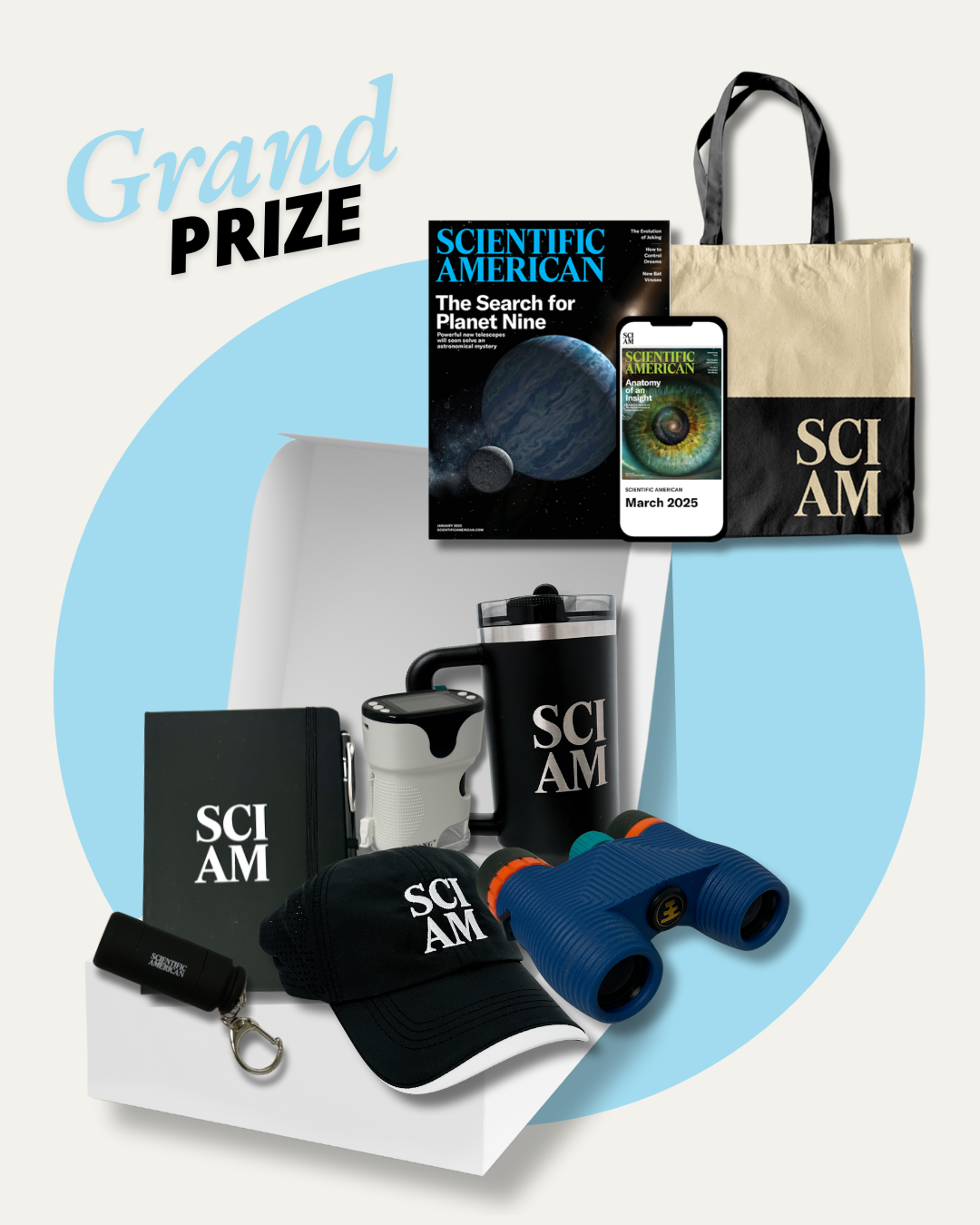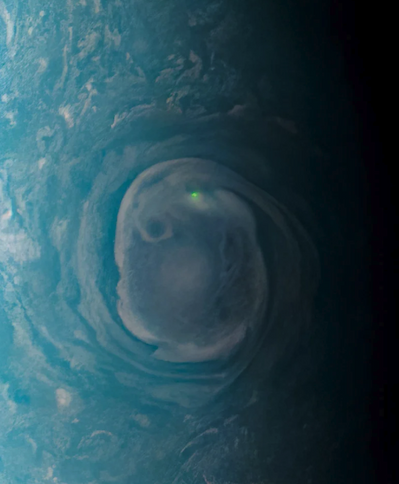Your daily source for science discovery, wonder and awe ͏ ͏ ͏ ͏ ͏ ͏ ͏ ͏ ͏ ͏ ͏ ͏ ͏ ͏ ͏ ͏ ͏ ͏ ͏ ͏ ͏ ͏ ͏ ͏ ͏ ͏ ͏ ͏ ͏ ͏ ͏ ͏ ͏ ͏ ͏ ͏ ͏ ͏ ͏ ͏ ͏ ͏ ͏ ͏ ͏ ͏ ͏ ͏ ͏ ͏ ͏ ͏ ͏ ͏ ͏ ͏ ͏ ͏ ͏ ͏ ͏ ͏ ͏ ͏ ͏ ͏ ͏ ͏ ͏ ͏ ͏ ͏ ͏ ͏ ͏ ͏ ͏ ͏ ͏ ͏ ͏ ͏ ͏ ͏ ͏ ͏ ͏ ͏ ͏ ͏ ͏ ͏ ͏ ͏ ͏ ͏ ͏ ͏ ͏ ͏ ͏ ͏ ͏ ͏ ͏ ͏ ͏ ͏ ͏ ͏ ͏ ͏ ͏ ͏ ͏ ͏ ͏ ͏ ͏ ͏ ͏ ͏ ͏ ͏ ͏ ͏ ͏ ͏ ͏ ͏ ͏ ͏ ͏ ͏ ͏ ͏ ͏ ͏ ͏ ͏ ͏ ͏ ͏ ͏ ͏ ͏ ͏ ͏ ͏ ͏
August 25, 2025—Juno's space mission to Jupiter is coming to an end—it was a huge success story. Plus, the brain has a stable map of the body, and AI may be fueling psychosis. —Andrea Gawrylewski, Chief Newsletter Editor | | A 3-D fMRI brain scan with a red/brown area highlighting left hand control brain activity in the right cerebral hemisphere. Zephyr/Science Source | |  Celebrate 180 years of Scientific American with our SciAm in the Wild photo contest. You could win a one-year Unlimited subscription, science gadgets and exclusive gear. Entering is easy! Snap a photo of any Scientific American cover in a great setting, share the image on your social media (or email it to us), and you're entered to win!
Full contest instructions here. | | Jupiter's Great Red Spot glows in this image created from Juno observations. NASA/JPL-Caltech/SwRI/MSSS/Gerald Eichstadt/Sean Doran © CC NC SA | | In September, the Juno spacecraft mission to study Jupiter is coming to an end. The probe has lasted longer than ever anticipated—strong radiation from the planet should have corroded away its instruments and electronics long ago. Its primary mission ran from July 2016, when it arrived at the gas giant after a 1.7-billion-mile trek, to July 2021 when it was extended for four more years. The 30-foot spacecraft has upended a lot of thinking about planetary science in its nearly decade of research, some of which I'll highlight below. How it works: Three solar panels power a suite of nine instruments surrounded by a titanium electronics "vault" intended to protect the equipment from strong radiation. Among the instruments is one capable of measuring how the craft is affected by minute changes in the planet's gravitational field, another to detect water and ammonia in the deep layers of Jupiter's atmosphere, and a visible-light camera to capture Jupiter's clouds and surface features of Jupiter's moons. Juno is also the first spacecraft to use a polar orbit, with the intention of avoiding the deadly (and electronics-killing) radiation belting the planet's equator. By September 15 it will have made 76 orbits of the giant planet. What it found: Cyclones at the poles: Because of Juno's unique orbit, it was able to study clusters of stationary storms at the two poles. Each cluster of cyclones is larger than the U.S. To date, no one has an explanation for why these storms are so stable. | | Numerous oval cyclones on Jupiter's southern pole. NASA/JPL-Caltech/SwRI/MSSS (image data); Betsy Asher Hall and Gervasio Robles (image processing) | |  The glow from a bolt of lightning on Jupiter's northern pole. NASA/JPL-Caltech/SwRI/MSSS (image data); Kevin M. Gill © CC BY (image processing) Lightning. The upper atmosphere of Jupiter is speckled by lightning. But lightning requires the collision of liquid water with ice crystals, and the upper atmosphere is far too cold for liquid water to exist there. How is the lightning possible? Using its microwave radiometer, Juno discovered evidence that softball-size globules of ammonia and water slush are the secret. Inside these "mushballs," the ammonia acts as a kind of antifreeze, allowing the liquid water to create sparks for lightning. The glow from a bolt of lightning on Jupiter's northern pole. NASA/JPL-Caltech/SwRI/MSSS (image data); Kevin M. Gill © CC BY (image processing) Lightning. The upper atmosphere of Jupiter is speckled by lightning. But lightning requires the collision of liquid water with ice crystals, and the upper atmosphere is far too cold for liquid water to exist there. How is the lightning possible? Using its microwave radiometer, Juno discovered evidence that softball-size globules of ammonia and water slush are the secret. Inside these "mushballs," the ammonia acts as a kind of antifreeze, allowing the liquid water to create sparks for lightning. | | The core: Scientists long thought that Jupiter had either a compact, solid core or lacked any core at all. But Juno's gravitational detector suggested the innermost core is rather "fuzzy" and interacts with the surrounding metallic hydrogen that makes up most of the planet.
The moons: Jupiter's moon Io is the most volcanically active world in the solar system and in 2024, as it traveled close to the moon (within 900 miles) Juno spotted on it the largest eruption ever recorded: lava spread over 40,000 square miles, enough to cover a quarter of California. The final mission: It is uncertain whether Juno will get another extended mission into 2028—budget cuts at NASA may end the spacecraft's operation. During an additional extension, the craft could observe the ghostly rings of Jupiter and some of its innermost moons. Whether it's sending back data or not, eventually Juno will fall into the planet's atmosphere and burn up, leaving behind a success story for solar system exploration. | | | | |
- NASA budget cuts jeopardize the agency's scientific research, and the U.S. will be settling for mediocrity, Louis Friedman, who co-founded the Planetary Society with astronomers Carl Sagan and Bruce Murray, wrote in April. "Space exploration is meant to create a positive future. The legacy of Apollo, and of our robot explorers in the solar system, is a real and worthy America-first legacy, one that proclaims American leadership based on a peaceful and global aspiration: the benefit of all humankind," he says. | 4 min read
| | Amanda Montañez; Source: Hans-Karl Eder/Spektrum der Wissenschaft (reference) | | Jovan built these five houses of cards using a total of exactly 90 playing cards. Now he wants to build one large house consisting of exactly 100 cards. Can such a house of cards exist? Click here for the answer. | | It's hard to wrap your mind around how big Jupiter really is: - 1,300 Earths could fit inside the gas giant.
- The famous Great Red Spot on the planet's surface is a storm system that could encompass Earth.
- All the other planets in the solar system could easily fit inside Jupiter.
- Jupiter's mass outweighs all other planets in the solar system combined, by more than two and a half times.
For all astronomers' efforts to count the galaxies and stars, it's humbling to remember that even here in our own neighborhood of space, we are cosmic shrimps. Somehow it makes facing a busy week feel easier. | | Welcome to a new week of scientific discovery. Please send your comments or feedback on this newsletter to: newsletters@sciam.com. See you tomorrow! —Andrea Gawrylewski, Chief Newsletter Editor
| | | | |
Subscribe to this and all of our newsletters here. | | | | |

